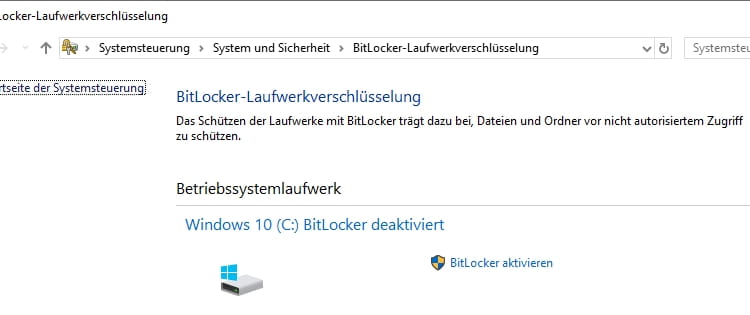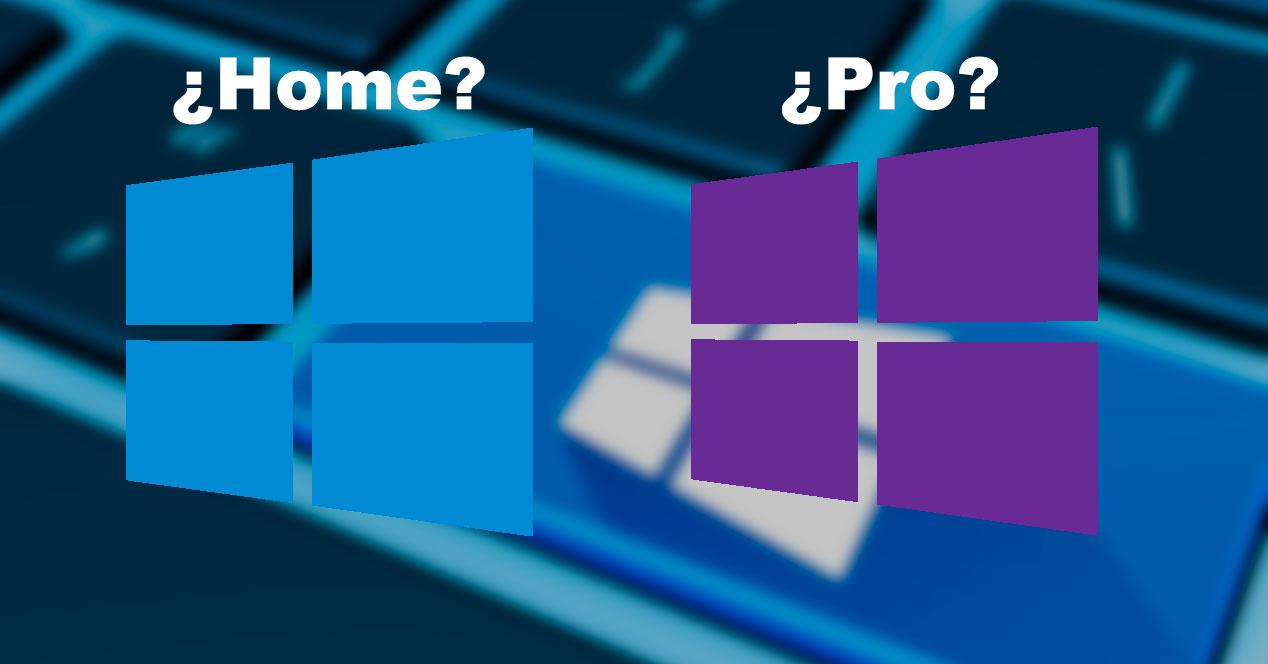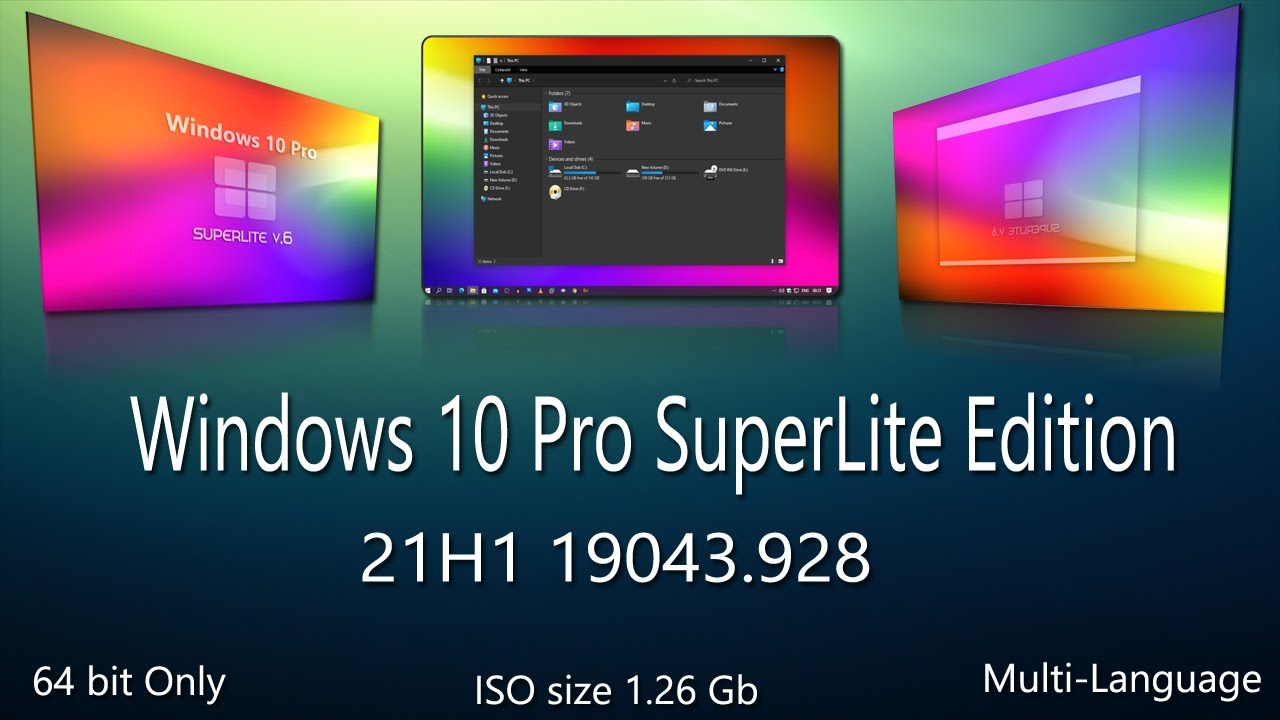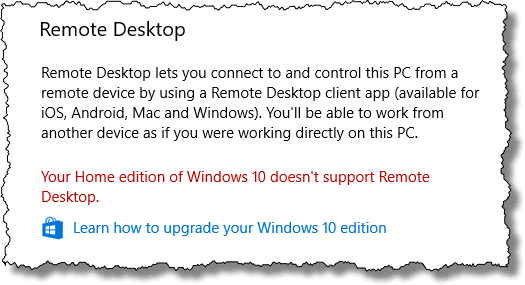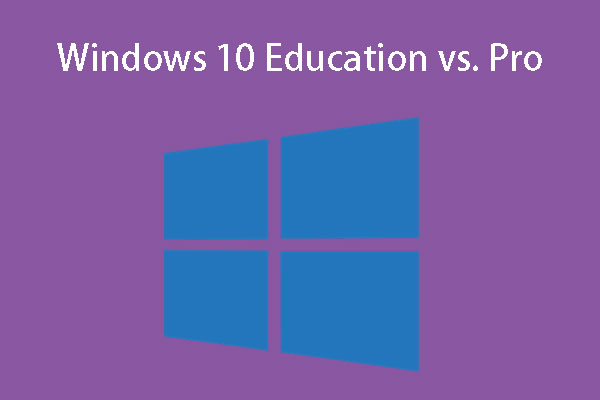As you can see, for most standard users, Windows 10 Home contains all of the features you'll want or need including the cool new additions like Cortana, Edge Browser and improved Biometric security. Similar to previous versions of Windows, Pro versions of Windows 10 come with features intended for businesses and connecting to professional networks such as Domain Join and Remote Desktop. Windows 11 Pro has everything the Home version has, while also adding a few additional features, mostly serving professional environments. One of the most notable ones is BitLocker, which is a full volume encryption tool that can encrypt your drive volume using 128-bit or 256-bit AES encryption and your computer's TPM. The system administrators can configure these settings for computers joined to the same domain. Other experienced users can also use group policy editor to their own PCs.
Furthermore, Windows 10 Pro allows virtualization through Microsoft Hyper-V. The remote desktop connection is another feature that it has. Moreover, PCs with Pro edition can accept or host an inbound terminal server session. These are some of the extra features available in Windows 10 Pro. New releases of Windows 10, called feature updates, are released twice a year as a free update for existing Windows 10 users.
Each feature update contains new features and other changes to the operating system. The pace at which a system receives feature updates is dependent on the release branch from which the system downloads its updates. Windows 10 Pro, Enterprise and Education could optionally use a branch, which is defunct since version 1903, that received updates at a slower pace. These modes could be managed through system settings, Windows Server Update Services , Windows Update for Business, Group Policy or through mobile device management systems such as Microsoft Intune.
Hyper-V is a Windows-only hypervisor used for running virtual machines on CPUs that support virtualization. While Hyper-V is included with your Windows 10 Pro license, it needs to be downloaded and installed separately. Before selecting a Windows 10 edition, the first step in any migration plan is an assessment of your IT environment. With Lakeside Software's SysTrack, you can quickly and accurately collect data on your users' PC environment to better inform your Windows 10 migration plan.
Is Windows 10 Home Better Than Windows 10 Pro This allows enterprises to determine the necessary costs and scheduling of the migration process. These are the core differences in Windows 11 Home vs Pro editions. As we've mentioned, most of them revolve around features meant for business users.
Some are designed to protect especially sensitive information, while others have to do with quickly setting up devices for users and managing them remotely. For the average person walking into a store, you're probably going to be just fine with Windows 11 Home. The odds are if you need Windows 11 Pro, you already know you need it and why. Another difference that will be noticeable for business users is that Windows 11 Home PCs can't be joined to Active Directory. Active Directory solutions are necessary for managing business devices, such as configuring access to certain resources, deploying apps, and so on. Those are all professional tools, so they don't make sense for most Windows 11 Home users.
The professional version of Windows 10 includes many extra features designed for businesses. It has virtually everything offered by Windows Home, plus additional security and management services. This version of Windows 10 is typically purchased in bulk by companies or schools, though you can configure desktops and laptops to include it versus using Home. Pro users can get updates from Windows Update for Business, which includes options for scheduling updates so they don't reboot PCs at important business times. The Home version will suffice for majority of the individuals using Windows at home. The Pro focuses entirely on security and compatibility, and ease of use.
Home and Pro are two editions of Windows 10 Operating system. The difference between Windows 10 Home and Pro is that the Microsoft designed Home mainly for regular users while Pro for businesses. Furthermore, Windows 11 Home will likely offer limited functionality and features when it comes to business management and deployment software. As business users often deal with especially sensitive information, there are also some extra security features in Windows 11 Pro. This feature encrypts data stored on your hard drive so no one else can access it. Even if your computer is stolen, your files are protected from users other than yourself.
This edition was introduced in July 2016 for hardware partners on new devices purchased with the discounted K–12 academic license. It also features a "Set Up School PCs" app that allows provisioning of settings using a USB flash drive, and does not include Cortana, Microsoft Store suggestions, Windows Sandbox, or Windows Spotlight. Microsoft has offered Pro versions of their OS since Windows XP. Similar to every other Pro model, the Windows 10 version is designed with business professionals in mind. It includes the core Windows 10 Home OS, but with a handful of additional security, productivity, and business management features. Windows 10 Home and Pro share some business features as well.
Both the Windows versions come with support for Microsoft Passport, device encryption, side-loading of business apps, and mobile device management. Along with that, both versions can be easily upgraded to Windows 10 Education Edition. Of course, the bulk of the differences between Home and Pro editions of Windows 11 are for businesses.
Most device management capabilities aren't available in Windows 11 Home at all. Windows 11 Pro, however, supports things like Group Policy, which lets IT admins configure certain policies for groups of devices in one go. There's also Windows Update for Business, which lets companies control how updates are rolled out to their users to avoid unexpected issues. As you may know, every major version of Windows comes in a few different editions.
The same applies to Windows 11, which has mostly the same editions as Windows 10 aside from the upcoming Windows 11 SE for education. For most people though, it's going to come down to Home and Pro. These are the two editions you'll be able to find in stores or pre-installed on computers.
If you're looking for a comparison of Windows 11 Home vs Windows 11 Pro, we've rounded up all the major differences here. If you're concerned about security and want to protect your data from intruders, or you're coming from MacOS and want something comparable to Apple's Filevault, you'll want to spend the extra money on Pro. Bitlocker provides full disk encryption so you can keep your data safe from hackers. The latest iteration of Bitlocker also allows for the encryption of individual files for more flexibility than the all-or-nothing approach of previous versions. Again, other software can accomplish similar encryption, but it's not built into the OS.
Be sure to get an SSD that supports the necessary hardware acceleration for Bitlocker if you don't want to lose performance. Microsoft has offered a Pro version of Windows since the XP days, bringing with it additional features for power users that Home doesn't offer. Here's a breakdown of the most useful features that you get with Windows 10 Pro, as well as free alternatives, when applicable. Microsoft is yet to confirm the exact Windows 11 Home and Pro differences, though it's currently possible to speculate based on how the Win 10 versions differ. Both versions offer all of the same fundamental features, though, in terms of security, they differ slightly. Win 10 Pro boasts BitLocker device encryption and Windows Information Protection over the Home version.
The former allows users to lock a lost or stolen device down, while the latter helps to prevent data leakage. However, whilst that's the case, we can still extrapolate some of the differences based on Windows 10 versions. For a start, Windows 11 Pro will likely offer additional security and business-tailored features when compared to the home version – as per Windows 10. Looking at the Windows 11 predecessor, Win 10 Pro did offer BitLocker device encryption and Windows Information Protection – something the Home version simply couldn't boast. These are two great features that help increase the security benefits of Windows 10 Pro over Home – and we expect to see similar differences with Windows 11.
Rather than classifying as a full edition of Windows 10, "S" is a mode that runs on either Home or Pro versions of the OS. It's designed to optimize security and performance, and it runs only apps that are downloaded from the Microsoft Store and browses the internet through Edge. Anyone with Home or Pro editions can make the upgrade at any time, but it's not a forced update. You can also switch out of S mode at any time, reverting back to Home or Pro, though you can't switch back once you've gone one way.
The "Media Feature Pack" can be installed to restore these features. The variation cannot be changed without a clean install, and keys for one variation will not work on other variations. But for everyone else, especially those who simply need an OS for gaming, it's just a bunch of unnecessary features packaged within the ability to handle additional RAM that you'll never use. Windows 10 Pro includes access to business versions of Microsoft services, including Windows Store for Business, Windows Update for Business, Enterprise Mode browser options, and more. These versions include extra features to buy and upload content in bulk. Options for virtualization include Remote Desktop compatibility, Client Hyper-V, Shared PC configuration, Azure Active Directory, and more.
In today's increasingly mobile business environments, improper use of mobile devices often leads to costly security incidents. Central management of enterprise mobile devices is crucial in subverting these security incidents. MDM is able to monitor all enterprise mobile devices at once, analyze usage data for individual users, and apply appropriate security policies. Buy the pro version for the features you will never even need or use for your home laptop. Meanwhile, Windows messes up with the updates irrespective of the version you buy.
Using a Windows with more features is gradually turning like having more features which can fail. Seriously though, bitlocker encryption is only useful for enterprises and companies. Virtualisation might be useful for the odd virtual image which you want to play with but that is it. Hyper-V is a virtualization tool built into Windows, which means you can create virtual machines with it.
If you want to try a different operating system, or use an older version of Windows for some reason, you can do it using Hyper-V. Virtual machines don't make changes to your host PC, so you can do it all risk-free. Again, there are third-party apps such as VMware Workstation Player that let you do this on Home editions. Perhaps most notable is Windows Update for Business, Microsoft's free service that's available also for Windows 10 Enterprise users. Through the above instruction, you know the extra features in Windows 10 Pro are really designed for businesses. The benefits of the Pro version focus on security and compatibility.
However, the value of these features will come down to whether you actually need them or not. If most of these features are meaningless to you, that's no surprise. Windows 10 Home features can suffice for the vast majority of users.
If you just want to browse the web, do a little work, and manage their media files, it's already quite good. While Pro has everything the Home version has and more, the average user will be served just fine by Windows 11 Home. All programs work the same, and aside from BitLocker and a few business features, it'll function identically. If you do need Pro for whatever reason, though, it has identical system requirements, local account support, and a few extra features.
While Windows 10 Pro boasts many additional features, the most significant difference is the suite of business management tools it provides. This includes the ability to lock down specific features, join a domain, and turn an out-of-the-box PC into a fully fleshed machine in minutes. The reasoning is that RDP is meant to assist business professionals who find themselves working remotely from time to time. It creates a secure connection between work and home computers that allows the user to access files, programs, and other sensitive material. This isn't a particularly useful feature for those just looking to game, and there are plenty of free or low-cost options available with similar functionality if you need it. In addition to small and medium businesses, Windows 10 Pro devices would be a good choice for organizations supporting CYOD programs.
The Windows 10 Home edition is light on professional and business features, choosing to shed some extra security but offers the familiar Windows experience most users are after. Several features in Windows 10 Professional are aimed squarely at the business market. Domain join, for example, allows you to bring in your own PC and connect it to the office domain. Group policy management allows an IT admin to control which PCs do what.
Likewise, if your business needs specialized enterprise apps, an admin can lock down the Windows Store to make sure employees get those, and nothing else. There's also the ability to join Azure Active Directory, with single sign-on capabilities. Retail versions cost $119 for a Windows 10 Home license or $199 if you go with the Pro version—OEM keys that are bought with a hardware purchase cost $109 and $149. That's a $40-$80 difference that could be put towards a better video card or more memory, but only if you don't need the additional features Windows 10 Pro offers. Windows 11 Home requires a Microsoft account and an internet connection to set up, whereas Win 11 Pro does not. Outside of this confirmed difference, Windows 11 Pro is likely to offer additional security and business features over the Home version.
Windows 10 Home edition suffice majority of the users who just wishes to browse the web, do simple operations & manage media files. However, Windows 10 Pro version is designed with the aim to provide security, better compatibility & other advanced features that most home users won't use. Windows 10 is a personal computer operating system developed by Microsoft. The user can select an edition according to the requirements.
If the user wants to complete small tasks such as browsing the internet, managing files, etc. he can use Home edition. If it is necessary to use advanced features, with more security and compatibility, he can use Pro edition. The main difference between Windows 10 Home and Pro is that Windows 10 Home is designed for regular users while Windows 10 Pro is designed to support business environments.
It has advanced features such as BitLocker, Group policy management, Hyper-V, etc. and more security features. Microsoft has said the new OS will include performance improvements, including faster logins with Windows Hello, faster web browsing and faster wake from sleep mode. Windows Hello is a biometrics-based technology that lets Windows 10 users authenticate secure access to their devices, apps and networks with iris scans, facial recognition or fingerprints. If you're running a small business and feel you need an assistant, why not hire Windows 10 Pro?
You're getting the same core features, same gaming perks, and same productivity apps as Windows 10 Home, plus a bunch of extras that professionals love, including Microsoft Hyper-V. You're interested in upgrading or making the switch to Windows 10, but you're not sure which edition is right for you. Like previous versions of Windows, there are a handful of options to choose from. Most have the same core features, plus some extras for specific types of users. Here's a breakdown of each edition and what it has to offer to help you decide which PC edition of Windows 10 is best for you.
If you don't end up buying a new PC or getting a free upgrade from a supported device, you'll have to pay $119 for a Windows 10 Home license or $199 for the Pro version. It's a pretty substantial price difference that may make you think twice about choosing Pro if you don't have a use for its additional features. Windows 10 Education includes features from Windows 10 Enterprise that are ideal for advanced security, and the comprehensive device control and management needs of today's educational institution. Windows 10 Education also enables simplified deployment in the education space; this edition provides a direct path for many devices to upgrade from Windows 10 Home or Windows 10 Pro.



